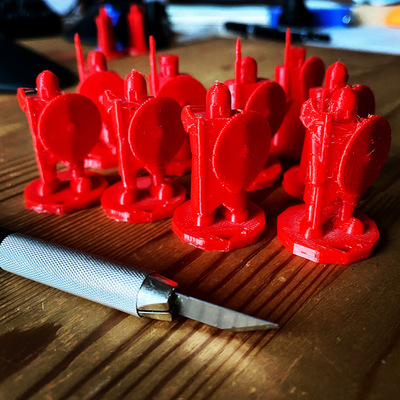
|
Situation Intent Missions |
| 2021-03-19 |
Situation Intent Missions
Turn-based wargames are deceptive. The military commander doesn't move each of the pawns in his troop, he gives orders. The subordinates execute the orders, not the commander.
When I was wearing green, we were taught to structure our orders with three vertebrae:
- Situation
- Intent
- Missions
The french for it was "Orientation - Intention - Missions", it's almost transparent, but SIM is a nicer abbreviation than OIM.
The Situation entails usually, own situation, enemy possibilities. The mission received or our own objective. Means at hand. Situation of troops in adjacent sectors.
The Intent is the core of the order. It is the result of the decision process. We were taught to begin it with "I want...". Subordinates should understand the objective of the action as well as the links between the various pieces of the action.
The Missions section is where pieces of the intent are distributed to subordinate commanders.
Once a mission is received, the subordinate will have to decide and generate his own intent, and the commander above will have to trust him with that.
Things will go wrong and the subordinates will have to act within the framework of the commander intent. The outcome described in the intent is to be produced.
You're a company commander, not a section commander. You should not stick to your section commanders and ruin their authority. The fight was won a long time ago, the culture shared and the trust built. You tell what you want in a few words, you give the what, the subordinate comes up with the how on their own.
The enemy just took the Longchamp farm. Their strength is that a weakened platoon. Our mission is to retake it and to hold it until relieved. We've been given an artillery observer.
I want to leverage the ravine on our side of the farm to let two assault elements progress to where the bank is shallowest. The first element will take the building closest to the bank. The second element will then assault the main building. The third element, as a reserve, progresses and is ready to cover or assault when signalled.
Lieutenant Auderset, you're the artillery observer, I want you to pin the adversary in the farm while we progress. Cease fire on my signal. Be ready to fire again if ordered.
Section Bauch, you progress in the ravine and then assault the first building as soon as the artillery fire ceases and I give uou the go.
Section Carolet, you're the second assault element. You assault the first building when signalled.
Section Denezy, you're the reserve for this action. you progress in the ravine. When the two other sections begin their assault, you establish a fire position and prepare for cover or for assault.
My position will be with the Section Denezy.
Not the best plan, but hopefully it was produced before the enemy entranched themselves too firmly in the farm. There is a reserve (Section Denezy) at hand for the company commander to cope with things going wrong.
This way of doing originates in Auftragstaktik. The prerequisite is a shared culture, a shared set of words with precise definitions.
We were militia officers trying to leverage a tool made for professional officers, or even professional staff officers, coffee-powered mentats.
Now imagine having two groups of henchmen. "What orders do you give to the two sergents?" asks the referee, smiling, while he looks up the sergents INT and WIS scores.
